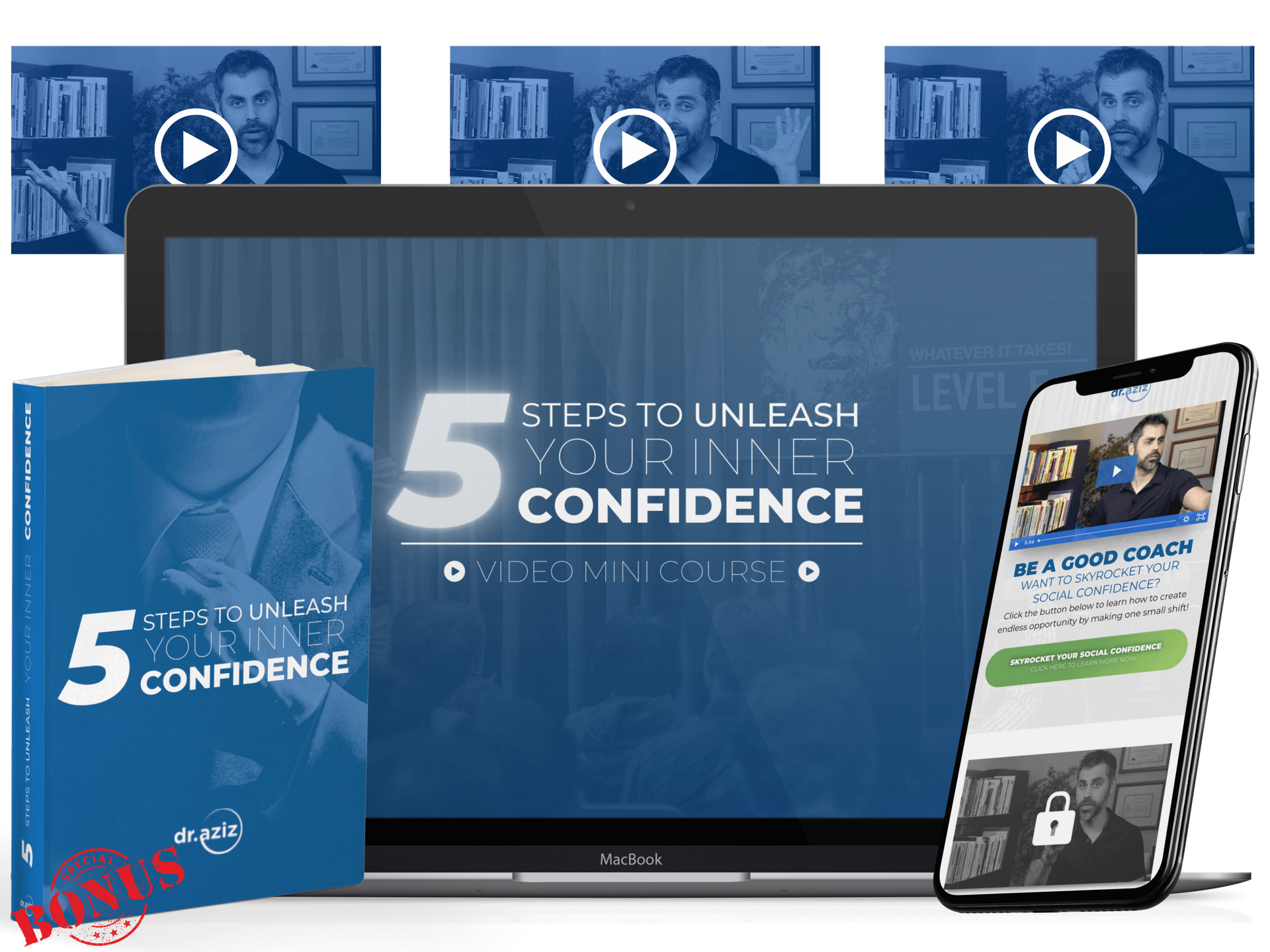How To Let Go Of Worry And Doubt
Apr 24, 2022What does it mean to worry and doubt yourself?
How do fear and self-doubt affect your mental state, physicality, and overall confidence?
For most people, worry is an indication of danger: If I’m feeling fear, then my subconscious must know it’s risky—I shouldn’t take that action. In the same vein, we tend to believe that doubt is an indication of a bad choice: I must be hesitating for a reason—I’m not going to go down that path.
In general, it’s safe to say that worry and self-doubt are the antitheses of ultimate confidence . . . especially if you’re feeling them all the time.
When we feel worry, we tense up—our bodies tighten, our minds freeze up, and our lives become stuck because we’re too afraid to move forward. When we feel self-doubt, we shrink up—our bodies slump, our minds descend into a downward spiral of negative thought, and our lives become stuck because we’re too unmotivated to move forward.
How do we break free of worry and self-doubt so that we can move forward on the path toward our happiest and most fulfilled selves?
As mentioned above, most of us have an unconscious response to fear and self-doubt: they cause us to flee or freeze which means that we’re not fighting for what we want. More importantly, however, they’re keeping us stuck in our negative mental patterns.
Those responses often have nothing to do with our external environment—they’re simply predetermined patterns that we run in our minds when faced with obstacles and tough decisions.
Unfortunately, patterns and habits take some time to break—or, technically, to override by forming and internalizing new habits.
It can take anywhere from weeks to years to really solidify newer, more beneficial habits in your mindset or daily routine and in the meantime, you have to make sure you’re taking care of yourself emotionally by staying on your own side and continually asking, “Is my response to this stimulus fear-based or worry-based?”
Let’s look at an example from real life:
My son rides on the back of my bike in a child seat attachment. Recently, I noticed that he has a mini moment of panic every time I stop the bike and get off—he thinks he’s going to fall. No matter how many times he rides the bike and doesn’t fall, and no matter how slowly or carefully I take the dismount, he still freaks out a little each and every time.
So, first thing’s first: do I tell him to get over it and toughen up, or do I stay patient and calm and speak with him about his panic rationally? Obviously, I go with the latter option.
This is important to acknowledge, though because it shines a light on how we talk to ourselves.
So often, we’re much harsher and way more impatient with ourselves than we would ever be with anyone else. We berate ourselves, we get impatient with our mistakes, and we judge every little thing we do or say.
How is this productive?
FACT: The only way to move forward when things aren’t going your way is to begin by treating yourself with patience.
If you have issues in this regard, you should check out my newest book, On My Own Side. This book is the ideal resource for anyone who is trying to let go of old, destructive stories and create a self-supporting mindset that encourages growth.
So, step one is to get on your own side and make sure you’re talking to yourself in a kind, supportive voice. At that point, you should consider whether your worry is justified or imaginary.
Some of us have created a pattern of perceiving danger where there is no legitimate threat. In the case of my son’s worry, I explained it this way: sometimes we are afraid and sometimes we’re worried.
Fear is based on something you know is a threat (getting injured while climbing Everest, chasing a ball into a busy street, etc.).
Worry, on the other hand, is based on threats that are mostly perpetuated by our minds (getting struck by lightning, being eaten by a T-rex, etc.).
When I asked my son whether he should be afraid of being eaten by a T-rex, he said, “No! Everyone knows dinosaurs are extinct!” Then I asked him if he should be afraid of falling off his very secure bike seat when he’s never fallen off before, and he said, “I guess not!”
At that point, we made the distinction that could allow his worry to subside:
Worry is there simply to help us maintain our focus—not to cause us to freak out about every possible threat on the planet.
Again, with my son, I explained that the odds of us falling or otherwise hurting ourselves while we’re riding our bike are extremely low, as long as we’re riding responsibly. I further explained that my worry lets me know that I need to pay attention to what I’m doing whenever I’m on my bike—especially when he’s on it.
It’s not wrong to consider the bad things that can happen in life (expect the best; prepare for the worst). But what we want to do is face your fears rationally and consider whether there is really a danger to get worked up about.
What are you really afraid of?
Is that fear justified by the reality of the situation?
Take a step back, slow down, and breathe.
Do whatever you need to do to let your mind relax, then ask yourself, “Is this a real danger or just my own personal worry?”
What we’re trying to get to the bottom of here is the root of our worries.
Often, when we take the time to hack through the underbrush of our worries, we find that what’s really beneath them is simply a fear of experiencing uncomfortable emotions.
There are very few things in modern society that are going to cause most people intense physical harm. If you want to free yourself from daily panic, you need to accept the idea that negative emotions are not going to hurt you.
Emotional work can be quite intense for some people, so if you feel that you need additional guidance through that mental transition, then you will probably benefit from enrolling in one of my online programs, such as Confidence University. These fully immersive programs are the best way to quickly and effectively absorb the concepts and practice the key techniques that will help you radically change your negative mental patterns.
In the meantime, the key to moving forward is remembering that your doubt is terrified of feeling discomfort but you have the power to handle anything that comes your way and learn to trust yourself without fail.
Life is full of choices, and you shouldn’t have to deal with doubt and fear every time you face a fork in the road.
The more action you take, the more confident you will become;
The more confident you become, the bolder you will feel;
The bolder you feel, the more empowered you will be to go after what you want in life.
You will never be able to completely rid your life of rejection but if you can learn to get off the sidelines and into the game, you WILL start to see big changes in your life.
As always, I ask that you subscribe if you want to receive new content as it’s released. Please also share your thoughts and questions below. What worries do you have in life? How are your doubts holding you back from going after what you want? Let’s share our unique experiences so that we can continue to learn and grow together.
Until we speak again, may you have the courage to be who you are and to know on a deep level that you’re awesome.
Reading blogs and watching videos online is a start...
When you are ready to radically transform your confidence so you speak up freely, boldly go after what you want, connect easily with others and be 100% unapologetically yourself, coaching is the answer.



